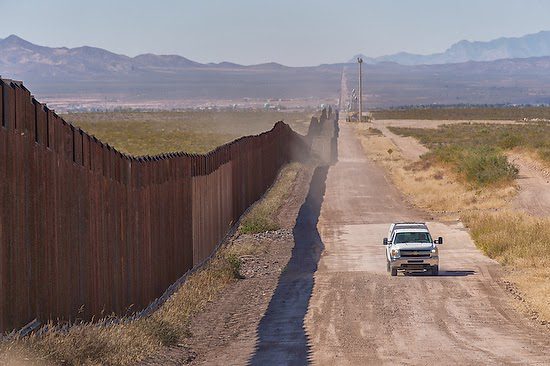| To help with the conflict portion of the plot for my story on coffee growers in Mexico, I had to talk about the immigration issue. Why did coffee farmers risk illegally crossing the border before they formed a coffee cooperative? I think this photo with the border patrol is one way to help establish the conflict. |
Elements of the Story
Storytelling has five main elements of a story: setting, plot, characters, conflict, and theme. Whether you’re studying a short story, a novel, an epic poem, a play o,r a film, if you don’t find these five elements, you’re not looking hard enough.
Definitions
The setting is the place for the story.
The plot is the action, the quest for satisfaction, what’s going down, and what’s going to happen. It is a series of events. Every story is a series of events. So the way you order these to create an account is called the plot.
The characters are the people in the story who act. All the characters in a story have a history and details about their pasts that are important to understand their personality and present lives. The audience must know some of these details to understand the story. These details are called the exposition. Explaining the characters of a story are early in the story. Often this is the first part of the plot.
Conflict is that something has gone wrong! Conflict happens when characters are against each other, like teams in a game or two groups fighting on the playground.
The resolution of the conflict is the story’s climax, the plot.
A theme is the hardest to get out of the five main elements of a story. That’s because a story’s main idea or message is usually something abstract. And authors rarely come out and state the main message. Instead, they imply the theme through the other elements of the story. Themes usually explore timeless and universal ideas.
 |
| This photo could be a scene setter for the story on the coffee cooperative. The red beans are arabica coffee is grown in Salvador Urbina, Chiapas, Mexico. |
Fill in the blanks
Take each of those elements and identify what those are in your story before you start to shoot. Even in breaking news, you need to understand these elements. Many great photojournalists do this instinctively because great storytellers quickly find the storyline.
Create an outline
With the experience of storytelling, you may no longer create an outline that you reference formally, but starting this is the best way to ensure that when you get ready to put the package together, you are not missing an element crucial to the story.
 |
| Luis “Pelayo” Diaz is a coffee grower and one of the founders of Just Coffee. Today his son is studying to be a Dentist, which was made possible through the coffee cooperative. |
Here is a list of some shots you will use to help tell your story.
- Opener: Sets the scene for the story
- Decisive moment: The one moment that can by itself tell the story
- Details: Besides being like visual candy to the report, help often with transitions–especially in multimedia packages
- Sequences: give a little variety to a situation
- High overall shot: Gives a good perspective on how the elements all fit together
- Closer: Besides the classic shot of the cowboy riding off into the sunset, there are other visual ways to help bring the story to a close
- Portraits: These photos are great for introducing the characters of the story
It is easier to start with knowing the different elements and having an outline before you begin shooting your story. But, it will also change from what you started—because things change.
Audience
I kept the audience broad when I was telling the cooperative coffee story. I could have easily just targeted the Presbyterian Church and given money to support the missionary who was instrumental in funding the cooperative. I could have also targeted the Catholic Church because they had a role in starting the cooperative.
I kept it broad enough, yet I had those audiences in mind. I told the story to those concerned about immigration and looking for a solution. The story was to establish the conflict of illegal immigration, with the resolution being cooperative.
 |
| So many patients are on the floor of the patient wing of the hospital. If you look closely, some of those beds have two patients on one bed. I wanted to help show the “conflict” of the story. |
I have worked on stories for mission organizations many times through the years. The goal of those stories was to get the audience to Give; Go, or Pray for missions.
Even in sports, there is a story. Here is one photo you see the conflict. You have offense and defense battling, and the story’s climax is where the hero slams the basket past the defender.
Can you look at your photos and find storytelling elements? Are you thinking about the story elements when you are shooting?
How can you tell a story if you do not understand what makes up a story? Hopefully, this will point you in the right direction on your next project.




